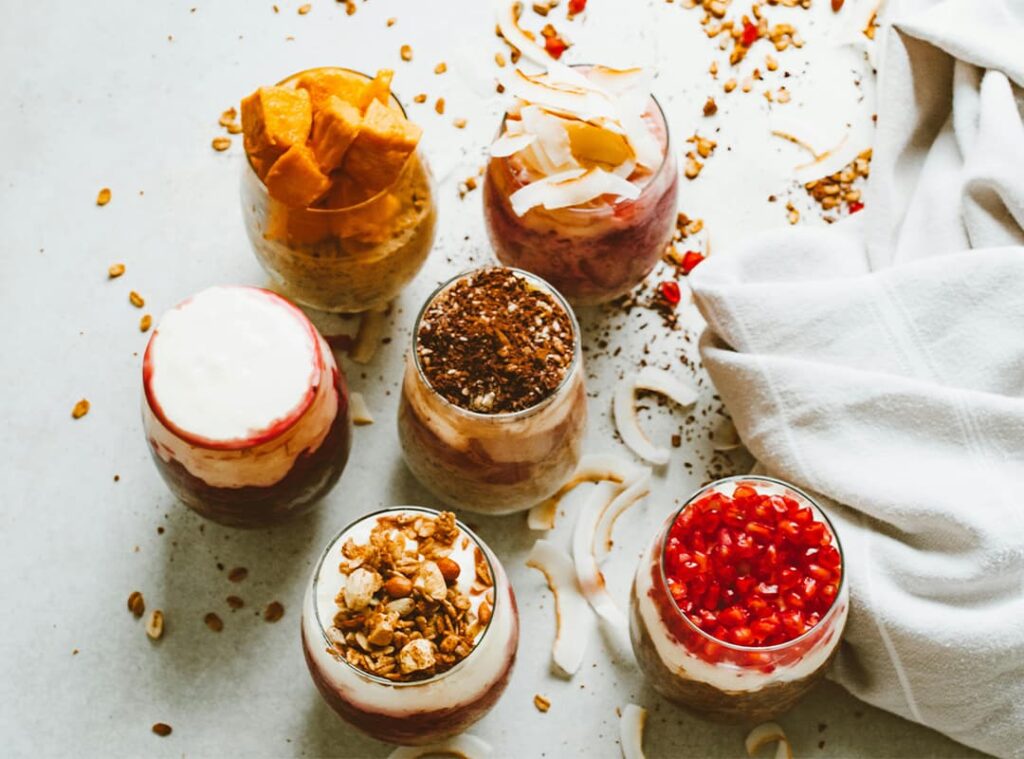Most 3d printers use the same approach to print food, building layer after layer. Does that make sense? Probably most of the time, but definitely is not the only approach.
An this is how Yogurt Up was born. Actually not. Yogurt up was born by looking at a food without caring about how to 3d print it. Everything started during my last visit to Korea, I was having dinner and my mother in law hand me a greek yogurt. Is funny how things that are so obvious some times are overlooked. After the first two spoons I realized that the texture of it was good to 3d print. And start playing with it. A week later when I was back to San Francisco and I bought 5 different types of yogurt and start experimenting with it.
Not all of them have the same consistency, obviously but I finally settle for Fage grek yogurt (we are not sponsored by them but would be cool ). The first test printing yogurt was free hand, without the printer just the extruder. That helped to try different deposition techniques. That was the instant when the non continuous dot technique started to take form.
The idea is to extrude big dots as building blocks elements.
By hand was easy to try but in order to test prints with the printer (DUH), a basic tool was mandatory to explore the parameters needed to control the technique. This was the moment the the Yogurt Up design tool was born.
What is it?
This is a test design tool that created dotted pyramids. The following video is a great visual aid to understand what the app does.
How to use it?
You are going to need a 3d printer with paste extruder. I am using Pinya3.
Parameters:
General pyramid parameters:
- Pyramid initial height [mm]
Height where the initial layer of dots will be be printed.
- Dot (layer) height [mm]
The distance between the bases of the previous layer of dots and the current one.
- Travel feedrate [mm/min]
Printer head movement feedrate without printing.
- Travel Z lift [mm]
Distance to retract the printer in the Z axis between travel from dot to dot.
- Build up pressure [mm]
Initial reservoir build up pressure to start printing with a paste extruder.
- Release pressure [mm]
Release reservoir pressure to avoid oozing material.
Dots parameters:
- Dots per side
This is the amount of rows and columns that the base pyramid layer will have. In previous video it was 3.
- Distance between dots [mm]
Distance between the center of each adjacent dot.
- Dot initial printing height [mm]
Distance between the dots layer base height and the starting dot printing height.
- Dot final printing height [mm]
Final dot printing height refered to the current layer of dots.
- Printing dot feedrate [mm/min]
Printing dot feedrate. Affects both the extrusion and Z axis.
- Dot extrusion [mm]
Distance to be extruded per dot.
- Printing dot retraction [mm]
Extruder retraction after each printed dot to avoid oozing/dripping material.
Considerations
This is a test application, by no means I guarantee will work with your printer, therefore use it AS IS.
The output GCode start at the position x=0 and y=0.
We have tried, several different material; yogurt, chocolate mousse, hummus,… So extruding feedrate will totally depend on the material and the extruder that you are using. Actually fast prints will depend on that.
Obviously this app is open source, here is the repository just in case you want to experiment and learn from it.

